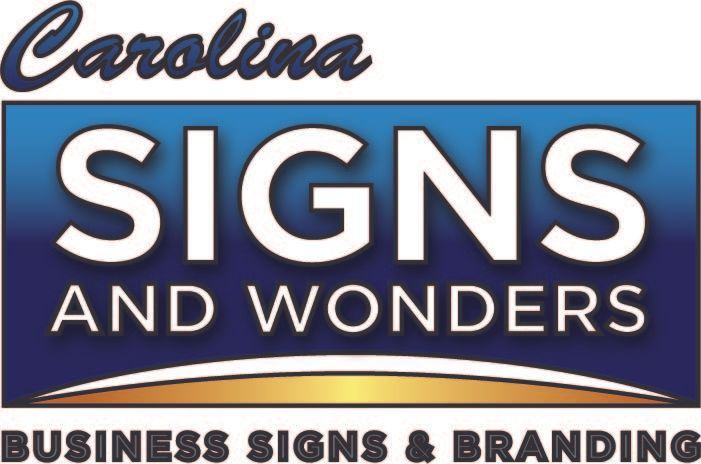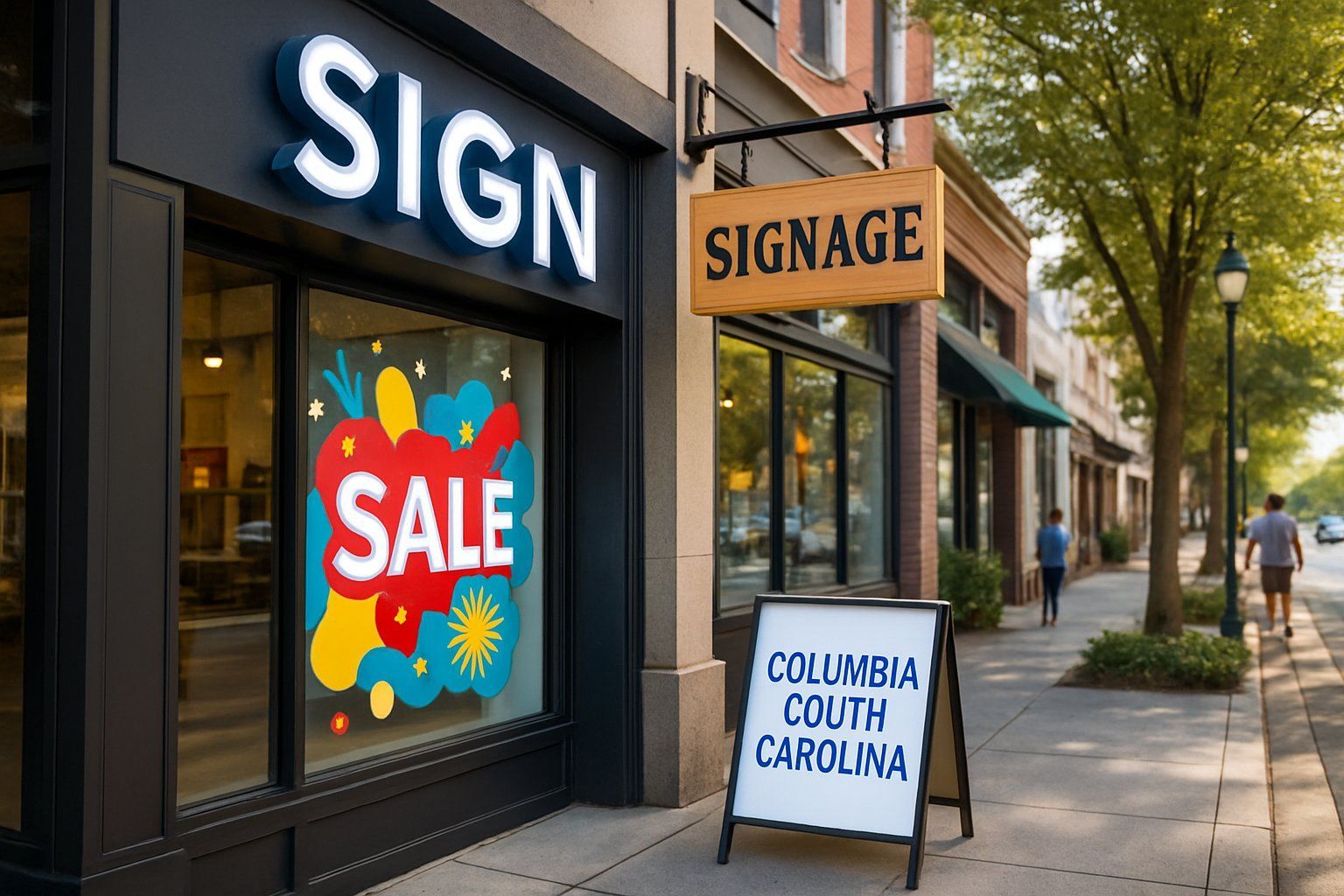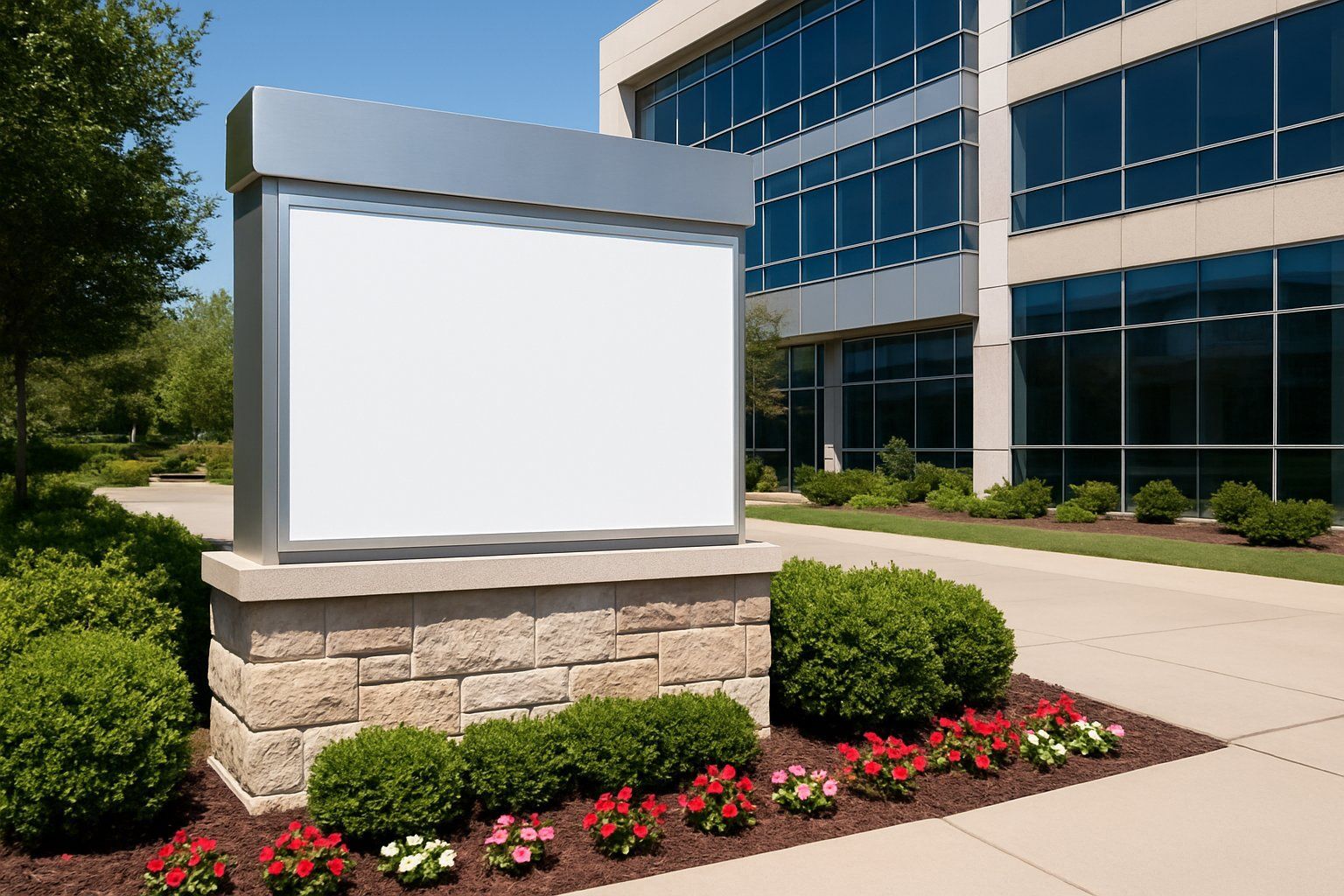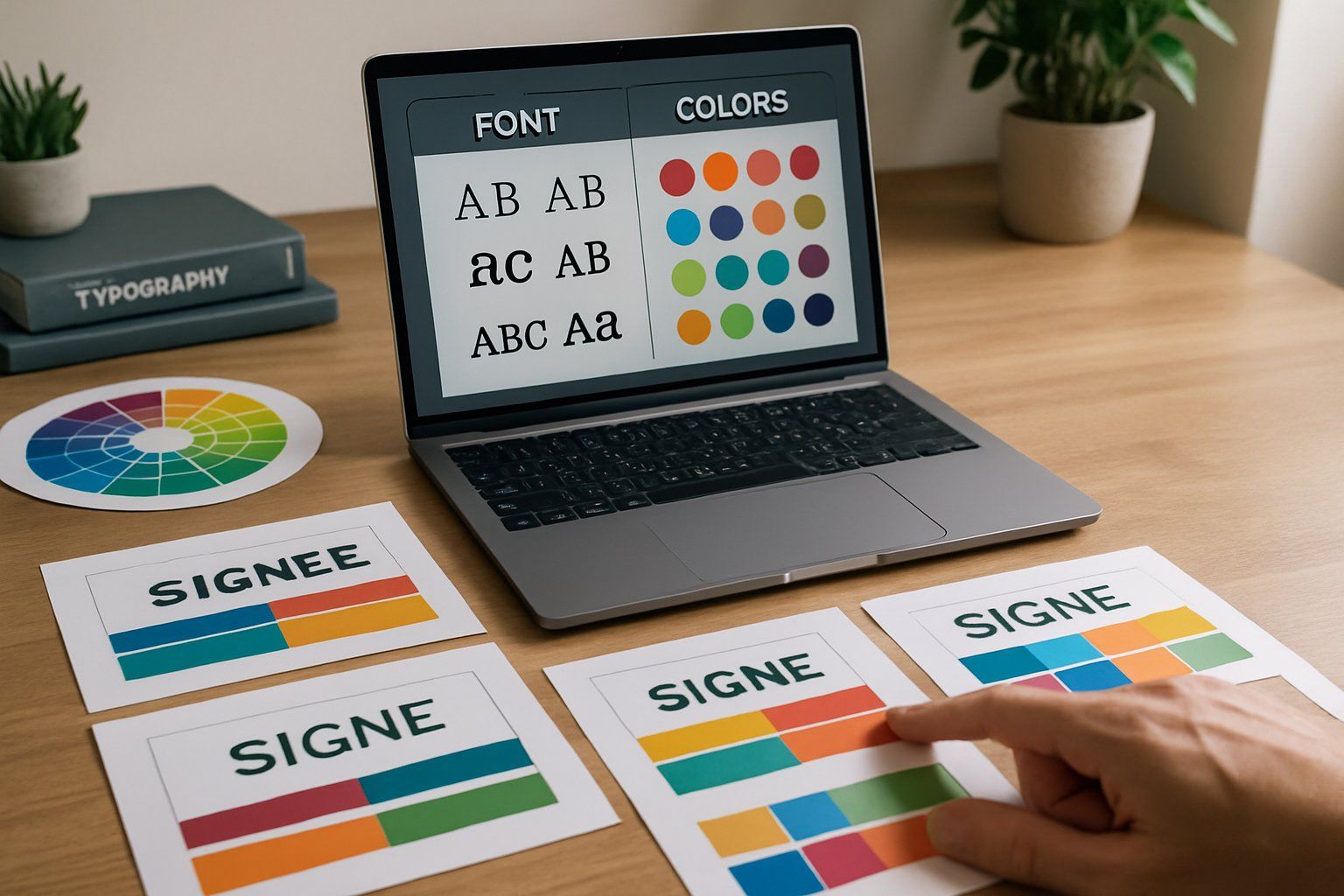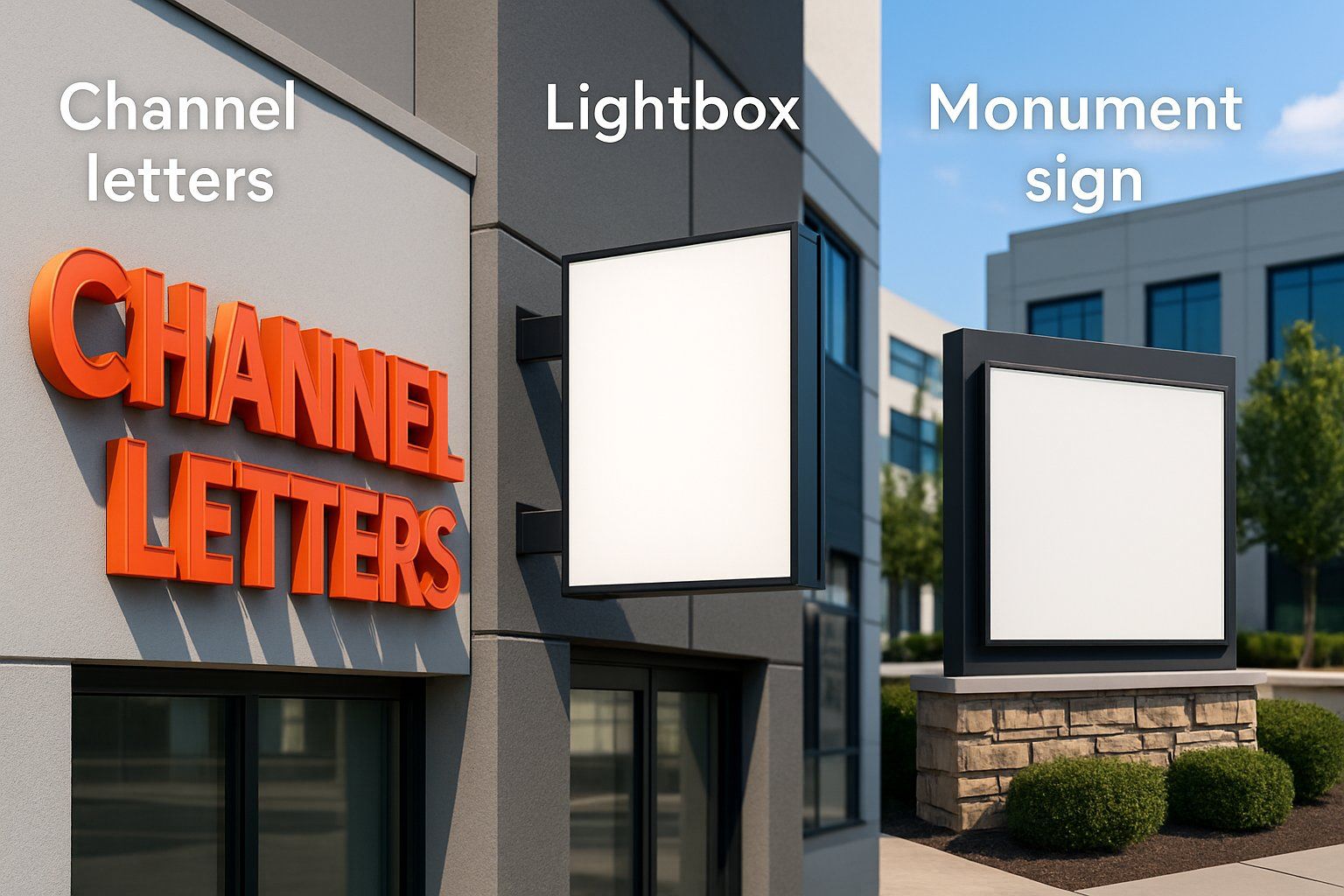How Storefront Signs Influence Shopping Patterns in Columbia: Local Consumer Insights
Storefront signs play a crucial role in shaping shopping habits in Columbia by catching the attention of local consumers and influencing their decisions. Effective signs use clear messages, colors, and designs that reflect the store’s identity and invite shoppers inside.
In a busy retail environment like Columbia’s, these signs go beyond simple identification—they help businesses stand out and attract the right audience.
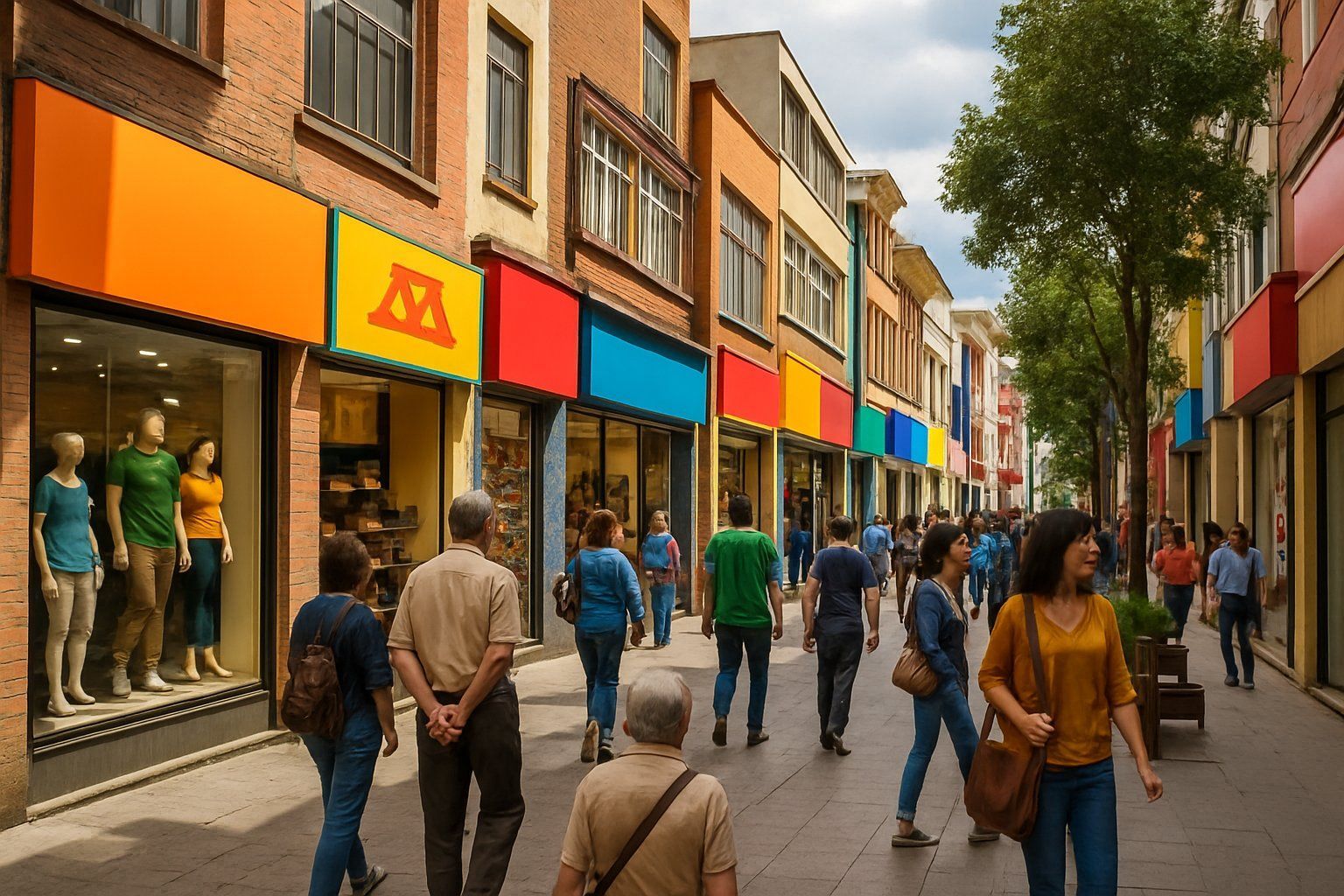
Local shoppers respond strongly to signs that highlight promotions, new products, or store hours because these messages create a sense of urgency and guide choices. Well-placed signs also improve how easily customers find what they need, making shopping more convenient and enjoyable.
Key Takeaways
- Clear, well-designed signs attract more local shoppers in Columbia.
- Promotional messages on signs influence quick purchasing decisions.
- Easy-to-navigate signage improves the overall shopping experience.
The Role of Storefront Signs in Columbia’s Local Retail Environment

Storefront signs in Columbia have a direct impact on how consumers notice and interact with retail businesses. These signs serve as a first point of contact that can attract attention and influence shopping decisions.
They differ from in-store displays in their function and placement, both contributing uniquely to the retail experience.
Columbia’s Retail Landscape and Local Preferences
Columbia’s retail environment is diverse, with a mix of local shops, national chains, and unique boutiques. Consumers here tend to favor clear, attractive signage that reflects the store’s brand and offerings quickly.
Many local shoppers respond well to signs that balance visual appeal with useful information, such as store hours or special promotions. Durability and style are important since signs are exposed to outdoor elements and must remain legible year-round.
Retailers that adapt their storefront signs to local tastes often see increased foot traffic. For example, signs using bold colors and simple fonts attract attention without overwhelming the viewer.
This approach respects the local preference for a clean and professional look.
Importance of First Impressions in Local Consumer Behavior
First impressions are crucial in Columbia’s retail sector. Storefront signs often shape these impressions because they are the first contact point for passing customers.
A well-designed sign can build trust and signal the quality of the store’s products or services. Research shows that consumers decide quickly whether a store looks inviting based on its exterior elements, including signage.
When signs are visible, neat, and on-brand, they encourage passersby to enter rather than keep walking. In Columbia, consumer attention is especially sensitive to clarity and relevance.
Signs that include clear calls to action, like “Sale Today” or “New Arrivals,” invite immediate interest. This can lead to unplanned visits and potentially more sales.
Distinction Between Storefront Signs and Other In-Store Displays
Storefront signs differ from in-store displays in both purpose and placement. Storefront signs are fixed on or near the building exterior and work primarily to attract attention from a distance.
They are designed to draw people into the store. In contrast, in-store displays focus on enhancing the shopping experience once inside.
They guide customers through the store, highlight products, and can influence buying decisions. These displays include point-of-sale signs, lifestyle graphics, and promotional posters.
Storefront signs in Columbia must stand out in a busy outdoor setting. They serve as silent salespeople working 24/7.
Meanwhile, in-store displays support longer customer engagement and product interaction deeper inside the retail space.
Both are needed for a complete retail strategy that captures and holds consumer interest.
Visual Elements That Capture Consumer Attention
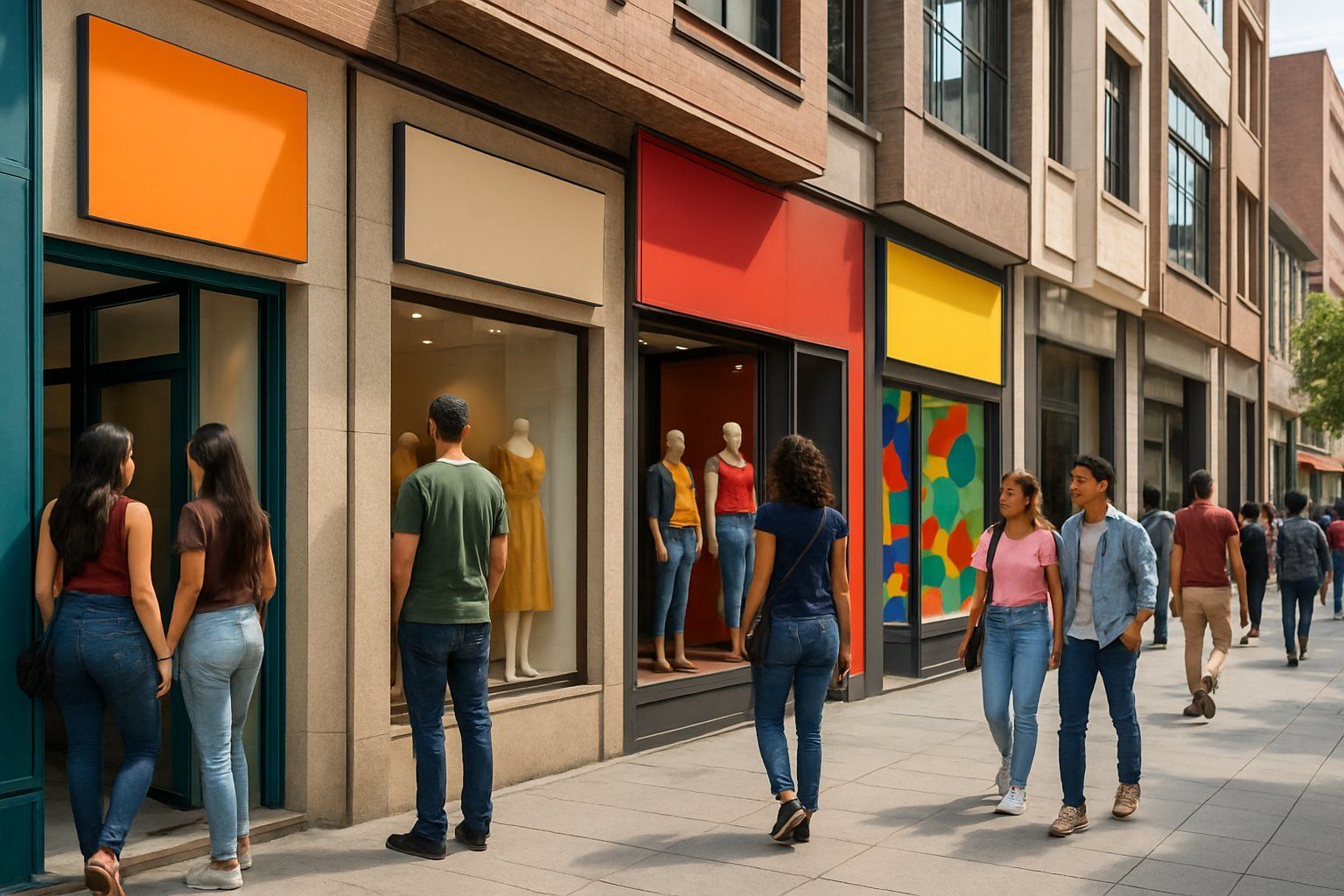
Storefront signs rely on clear and smart visual choices to stand out. The use of color, font style, and the way elements are arranged directly affects whether consumers notice the store and what feelings they take away.
These factors shape how shoppers behave in Columbia’s retail areas.
Use of Color Psychology in Storefront Signage
Colors in storefront signs influence emotions and can drive shoppers to take action. For example, red can create a sense of urgency or excitement, encouraging quick decisions.
On the other hand, blue often promotes trust and calm, which can make customers feel secure about the brand. Businesses in Columbia use colors that fit local culture and the type of product they sell.
Warm colors like orange and yellow attract attention and create energy but should be balanced to avoid overwhelming passersby. Choosing the right color combination improves visibility and evokes specific moods.
This can increase how long consumers look at the sign and their likelihood to visit the store.
Typography and Readability for Maximum Impact
Typography plays a big role in whether a storefront sign is easy to read and professional. Simple, bold fonts are best because they allow consumers to quickly understand the message.
Overly decorative or cluttered fonts can confuse or repel potential shoppers. The size and spacing of letters must match the distance from which the sign will be seen.
Large letters with clear spacing make the sign legible from a distance, which is important for busy streets in Columbia. Readability ensures that the brand message is communicated immediately.
Clear typography supports brand trust and makes the store appear more credible and welcoming.
Effective Layout and Visual Hierarchy
The layout organizes information so shoppers know what to look at first. Good storefront sign design uses visual hierarchy to guide the eye toward the most important elements, like the store name or a special offer.
Signs with balanced spacing between text, images, and colors avoid crowding, which can distract or confuse consumers. Strategic placement of visuals and text helps customers absorb information quickly.
Using bold fonts for headlines and smaller text for details is one way to create a clear flow. This design technique helps Columbia shoppers focus on key points, making it easier for them to make decisions while passing by.
Branding and Emotional Influence of Storefront Signs
Storefront signs play a key role in shaping how shoppers see a brand. They help define the business’s personality, build trust, and make a memorable impression.
Signs also create emotional links that influence shoppers’ choices and encourage loyalty.
Building Brand Identity Through Signage
Storefront signs act as a visual badge for a business. They communicate what the brand stands for by using elements like color, font, and design style.
For example, a modern, sleek sign suggests innovation and professionalism, while a rustic wooden sign may reflect tradition or craftsmanship. Clear logos and consistent design help customers instantly recognize the brand.
Signs that reflect the brand’s core values make it easier for shoppers to understand what to expect. Consistent branding in signage supports customer trust, as it shows the business cares about its image.
This visual identity becomes part of the shopping experience and can influence where customers decide to spend their time and money.
Creating Emotional Connections with Shoppers
Effective storefront signs can trigger emotional responses, which affect consumer behavior. Bright colors might evoke excitement or happiness, while calm tones could inspire trust and relaxation.
Emotional connections foster loyalty, encouraging repeat visits. Signs highlighting special offers or welcoming messages engage shoppers right at the entrance.
Personalizing the sign’s message or style to fit the local community can increase emotional appeal. By connecting emotionally, signs move beyond basic information and create a bond that supports sales and positive word of mouth.
Brand Consistency and Recognition Across Touchpoints
Consistency in signage is crucial for reinforcing brand recognition. When customers encounter the same colors, fonts, and logos across various channels—storefront, website, social media—it builds familiarity and confidence.
| Aspect | Impact |
|---|---|
| Consistent color use | Boosts instant brand recall |
| Uniform font styles | Enhances professionalism |
| Repeated logo display | Strengthens consumer trust |
In Columbia, this consistency helps shoppers quickly identify local businesses. It also supports a clear, unified brand message that increases the likelihood of repeat business and referrals.
Strategic Communication: Promotional Signs and Creating Urgency
Promotional signs in Columbia stores help shape consumer choices by focusing on timely offers and limited availability. Clear, targeted messages guide shoppers to act quickly and make decisions that benefit the business.
Leveraging Scarcity to Influence Purchasing Decisions
Scarcity signals boost the perceived value of products. When shoppers see messages like “Only a few left” or “Limited stock,” they feel an urgency to buy before items run out.
This taps into a natural fear of missing out. In Columbia, stores that highlight product limits often see quicker purchase rates.
Scarcity works best when it’s truthful and visible. It can be shown through phrases on signs, visual markers indicating low supply, or countdown timers.
This tactic helps reduce hesitation. Shoppers are less likely to delay buying when they believe the offer won’t last.
Scarcity also encourages impulse buying, which can increase overall sales for local businesses.
Use of Urgency Messaging for Immediate Consumer Response
Urgency messaging drives fast action. Words and phrases such as “Sale Ends Today,” “Limited Time Offer,” or “Hurry In” create pressure to decide quickly.
This strategy works by shortening shoppers’ decision-making time. In Columbia’s retail spaces, urgency signs placed near entrances or checkout areas remind customers about ongoing deals.
This keeps buyers focused on the offer instead of browsing aimlessly. Clear and simple wording helps urgency signs work best.
Combining them with bright colors or bold fonts makes these signs stand out and grab attention. The goal is to convert interest into immediate foot traffic and purchases.
Impact of Promotional Sign Placement on Shopper Flow
Where promotional signs are placed affects how shoppers move and make choices. Signs positioned near entrances catch attention early, increasing the chance customers will enter the store.
Inside the store, signs placed along main paths guide shoppers toward featured products. Placing promotional signs near cash registers can prompt last-minute purchases.
In Columbia, smart placement means understanding shopper habits and store layout. Signs that highlight sales at decision points can nudge consumers to act.
Visibility, readability, and relevance all contribute to how effective these signs are at shaping shopping patterns.
Navigation and Shopper Experience: Wayfinding and Digital Displays
Clear navigation helps shoppers move easily through stores, reducing frustration and improving their overall visit. Effective wayfinding and digital displays guide consumers to products and promotions, which influences how they explore and buy.
Wayfinding Signage for In-Store Navigation
Wayfinding signage uses clear, visible signs to direct shoppers inside stores. In Columbia, effective wayfinding reduces confusion, helping customers find products quickly.
This can lead to longer visits and more purchases. Signs often include maps, arrows, and labels.
When placed at entrances and key intersections, they create a smooth flow. This reduces shopper stress and improves confidence in navigating large or complex stores.
Smart wayfinding tools, like digital kiosks, add real-time information. They can adapt for temporary store changes or promotions, keeping navigation accurate.
This technology supports shoppers with disabilities by offering accessible routes and audio guidance.
Role of Digital Displays in Enhancing Shopping Experience
Digital displays capture consumer attention by showing dynamic content. These screens highlight sales, new arrivals, or special events, encouraging shoppers to explore more.
They can be interactive, allowing shoppers to search for products or browse store layouts. This adds convenience and engagement, making shopping faster and more enjoyable.
Retailers use digital displays to personalize messages and update content quickly. This flexibility helps highlight items that fit local consumer preferences in Columbia, boosting interest and sales.
Together, wayfinding and digital displays create a seamless shopping experience that supports navigational ease and promotes consumer interaction.
Optimizing Storefront Sign Design for Local Consumer Behavior in Columbia
Effective storefront signs reflect the unique preferences and habits of local shoppers in Columbia. Tailoring sign design to cultural values and testing different approaches helps businesses build strong brand recognition and attract more foot traffic.
Cultural Considerations in Columbia’s Signage
In Columbia, consumer behavior is influenced by cultural symbols, colors, and language preferences. Sign designs that use familiar icons or phrases resonate better with local shoppers.
For example, using Spanish alongside English on signs can improve communication and trust. Colors play a significant role; bright colors like red and yellow are often seen as energetic and inviting but might need careful use depending on the store type.
Traditional or natural materials in signage appeal to consumers valuing heritage and authenticity. Understanding local holidays and events allows businesses to adjust signs seasonally, increasing relevance.
Aligning sign design with Columbia’s cultural identity strengthens branding and builds customer loyalty.
Testing and Adapting Signage for Local Impact
Businesses in Columbia benefit from testing sign variations to see what drives more customers inside. This can include trying different fonts, sizes, or promotional messages focused on local interests.
Observing foot traffic patterns and asking for customer feedback helps identify effective design elements. Digital signage or temporary window signs offer flexible options for trial without high costs.
Clear, concise messaging geared to Columbia’s shoppers helps stores stand out. It also helps maintain a consistent brand image.
Frequently Asked Questions
Storefront signs impact shoppers by drawing attention and conveying brand identity. Inside the store, design elements like branding and layout shape how consumers behave and what they buy.
How does effective signage impact consumer purchasing decisions in retail stores?
Effective signage grabs customers’ attention and guides them to products or promotions. Clear, visible signs can highlight sales or new items, encouraging shoppers to make quick decisions.
They also build trust by showing professionalism and reliability. This helps customers feel more confident about buying.
What role does in-store branding play in altering customer shopping habits?
In-store branding creates a consistent visual identity that helps customers connect with the store. It sets expectations about the shopping experience and influences what customers choose.
Can you explain the psychological effect of a grocery store’s layout on a shopper’s behavior?
Store layouts are designed to control the flow of traffic and expose customers to more products. Essential items are often placed at the back, so shoppers pass other goods on the way.
This arrangement can boost impulse buying and increase overall sales. It does so by making customers spend more time inside.
What are the key factors that most significantly affect consumer shopping patterns?
Key factors include product placement, signage clarity, store atmosphere, and promotional displays. Personal influences like mood and social environment also play a role.
How do in-store advertising and displays shape customer buying tendencies?
Advertising and displays highlight special deals and new products. They draw attention to specific items, often prompting quick purchases.
Effective displays use color, lighting, and placement to engage shoppers. These elements influence choices inside the store.
Why is maintaining a balance between marketing and branding strategies important for influencing consumer behavior?
Balancing marketing and branding ensures clear, consistent messages that build trust while driving sales.
Overemphasizing one can confuse customers or reduce impact.…
